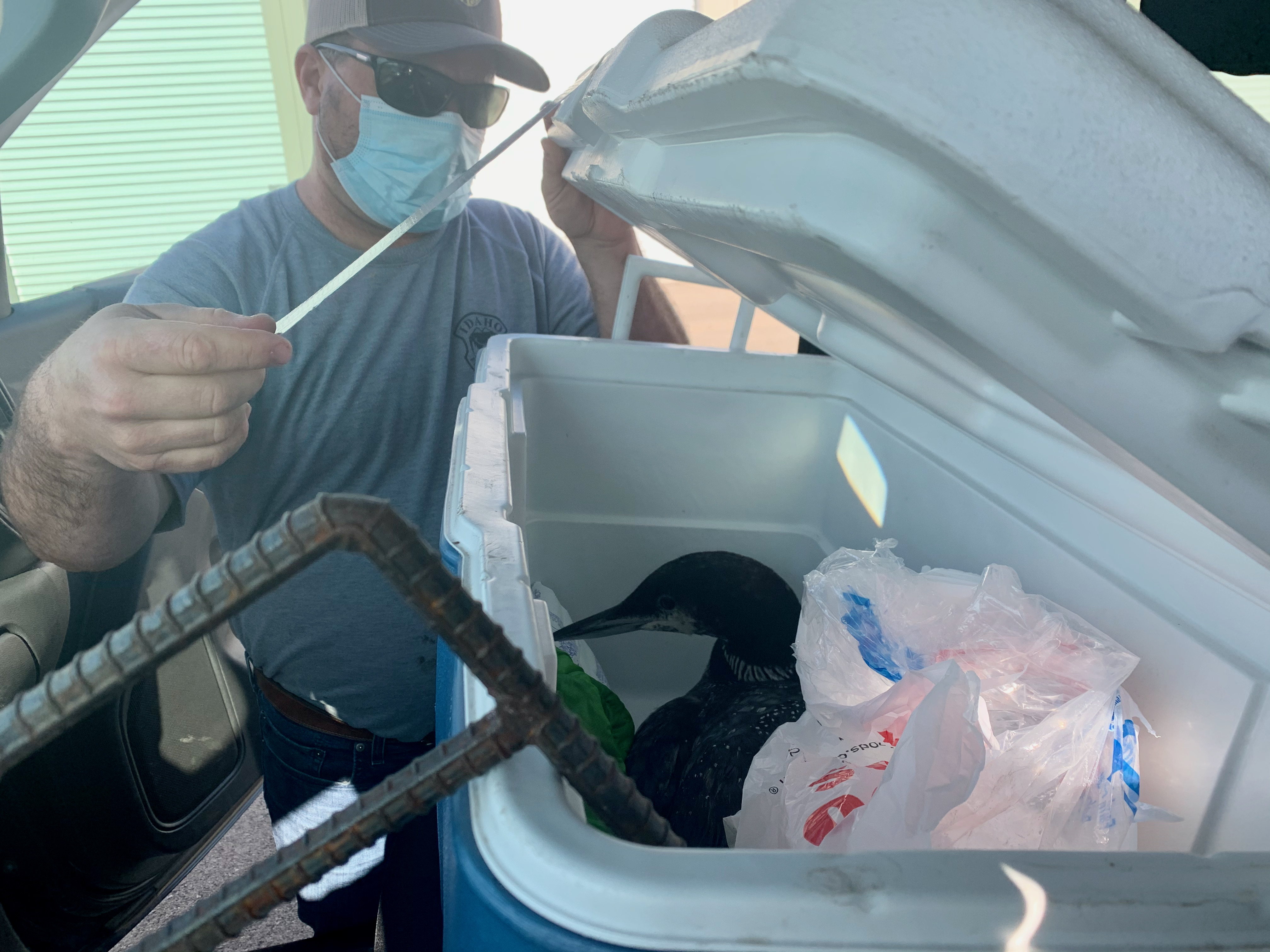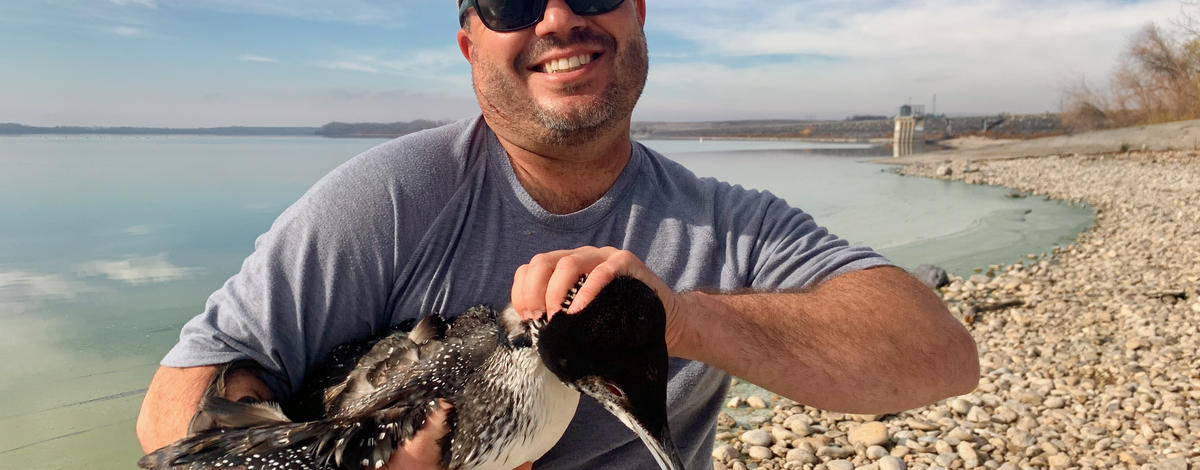On Friday, Nov. 12, habitat biologist Michael Young unloaded an ice chest — its lid propped open with a short piece of rebar — from a Fish and Game pickup in the main parking lot at Lake Lowell in Southwest Idaho. Careful not to jostle the creature housed in this makeshift crate, Young picked his way across the rocky shore before finally setting it down near the water line.
Peeling back the duct tape that kept the lid partially closed during the short drive to the lake from the regional Fish and Game office, Young slowly opened the ice chest to reveal its contents: a (somewhat irritated) common loon sitting on a bed made of ice packs and Young’s down jacket.

Young removed the bird and performed a quick examination for injuries, checked it for any fishing lures or monofilament fishing line and released it into the water with a clean bill of health. The loon briefly hung around the shore, dipped its head into the water and let out a couple of the mournful wails for which the species is known, before swimming off toward the middle of the lake and diving for fish.
The timely capture and release of this loon – an unlikely resident of a Garden City pond – was a half a year in the making, and a lucky encounter with Young ultimately gave the bird a chance at survival. On a scheduled day off, Young visited Riverside Pond on Nov. 12 and noticed that the loon quickly approached him, to within about 15 feet. Knowing the history of this loon and Fish and Game’s concern for its safety, he made the decision to attempt to lure it in and grab it and was successful in doing so. Unexpectedly, he was back on the clock and headed to the regional Fish and Game office in Nampa with a loon in his truck.
This loon had become somewhat of a local celebrity among birders in the area; it had been residing at Riverside Park in Garden City since at least late spring, if not earlier. Fish and Game wildlife staff were made aware of the loon in May 2021, and Wildlife Diversity Biologist Jamie Utz has been working to educate the public and capture and relocate the loon since.
Common loons migrate through Southwest Idaho during spring and fall but they are not frequent visitors, particularly to small city ponds, and there are no resident or breeding populations in this part of the state. The loon may have landed at Riverside Pond to rest on its journey, but the fact that it stuck around through the summer is highly unusual.
After deciding on Riverside Pond for a place to rest, it’s likely the bird didn’t have much of a choice. Unlike nearly all other birds capable of flight, loons have solid bones. This adaptation reduces buoyancy, which is an advantage for a species that dives to hunt for fish, but it makes flight much more strenuous. Common loons need large open water spaces like big ponds or lakes to gain enough momentum to get airborne. Utz connected with several loon experts, who suspected that this pond was too small for the loon to take off again and leave the area.
“This loon was capable of flight, but observers reported that the loon was gaining less than a foot of altitude before landing again,” Utz said. “Even if the loon gained more altitude, the biggest opening in the trees surrounding the pond led straight onto a busy four-lane street.”
Loons’ legs are also set very far back on their bodies, which again makes for a great swimming adaptation, but makes walking on land very difficult and awkward. This would have made it hard for the bird to reach the nearby Boise River, where it would have had more runway to take off.
Given these restricted conditions, it was unlikely the bird would be able to leave Riverside Pond on its own. Fish and Game staff were concerned for the loon because the onset of winter conditions would have meant very low odds of survival. Riverside Pond does freeze over, which would greatly threaten the bird’s safety. Loons can dive under ice to forage, but they spend a lot of energy in doing so. Common loons tend to migrate away from freezing water bodies in search of open water, where they can feed with greater success while expending less energy. Ice on the pond would reduce the bird’s options for safely preening, sleeping, and other surface behaviors. Thick ice would also allow predators to approach easily and give the loon few escape options.
The loon may stick around Lake Lowell on the Deer Flat National Wildlife refuge, or it might decide to continue on its way towards wintering grounds. If you’d like to try to spot this bird or other species at the Deer Flat NWR, check out Fish and Game's Idaho Birding Trail webpage for directions and a list of birds commonly found at this site.

